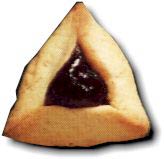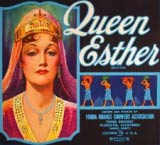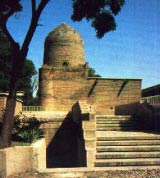Debbie Schlussel: Happy Purim!: Holiday Has Lessons for Today (Esp. Iran)
To my Jewish friends and readers, Happy Purim! To ALL of my friends and readers:
Today is the Jewish holiday of Purim (the Festival of Lots), which started at sundown, yesterday. It's sort of like a Jewish version of St. Patrick's Day & Halloween mixed together.
The true story of Purim reads like a Medieval episode of "24." It took place in ancient Persia (now Iran) and involves a dopey King, an evil advisor, a beheaded Queen, and a beauty pageant of beautiful women throughout the world. But most of all, Purim celebrates the survival of the Jewish people in the days that Persian King Xerxes ruled the world. Unbeknownst to him, his evil advisor, Haman, decreed to destroy the Jewish people.



The charming story of the holiday is one that real men and women will love, but feminists would hate. Here's my summary of the story (contained at length in the Scroll of Esther a/k/a Book of Esther):
The story starts when the Fifth Century B.C.E. Persian King, Xerxes I (a/k/a Ahaseurus), is partying with his subjects and demands that his wife Queen Vashti come to his party so he can show off her beauty. She refuses. Because of this, King Xerxes realizes that if he allows this, women throughout his kingdom--which spans the world--will disrespect and disobey their husbands, so he deposes Vashti (the story is that he has the Queen beheaded). Xerxes decides to hold a year-long beauty pageant of women selected from the best-looking virgins throughout his worldwide kingdom of 127 states and provinces.From all these women, Xerxes picks the winner of the pageant, the beautiful Esther (from whom the unworthy Madonna took her adopted Hebrew name), who marries Xerxes and becomes his new queen. She is Jewish, but keeps her Jewish identity a secret out of fear and instruction from her uncle, Mordechai. Mordechai, who raised Esther--an orphan--as his child, overhears of an assassination plot against Xerxes, which he reports to Esther. Mordechai is a hero for saving the King's life.
Xerxes promotes an evil man named Haman to Grand Vizier (Prime Minister)--his top advisor, and at the King's command, everyone is supposed to bow down to Haman. Mordechai refused, because it was against Mordecai's Jewish religious beliefs to bow before anyone except God. Haman's reaction was to organize a mass persecution and murder of all Jewish people throughout Xerxes' Persian kingdom, which, again, spanned most of the known world at the time.
Haman casts lots (which is "Purim," in Hebrew) to decide in which month to murder the Jews. Haman then distributes orders to slay all Jews on the thirteenth day of the Hebrew month of Adar. The Jews fast and mourn. At Uncle Mordechai's request, Queen Esther intercedes on behalf of the Jewish people throughout the world, risking her life by going to the King and telling him of Haman's plan. At a royal court bash, the tipsy Ahasuerus promises his beautiful Queen anything she could ask for, even half his kingdom. What Esther requested instead was the release of her people from Haman's genocidal plan, of which the King knew nothing. The King agrees to stop this and provide for the Jews to defend themselves. The King is angered by Haman's mischief, and Haman and his sons are hanged from the very gallows Haman built to hang Mordechai. The Jews are saved, and we celebrate the holiday of Purim to commemorate this.
Again, this is a true story, and Esther's and Mordechai's tombs are located in Hamadan, Iran. It was a popular tourist site when Iran was still a popular tourist destination--until the Shah was deposed by the Xerxes-esque Jimmy Carter.
On this holiday of Purim, people dress up in costumes, and it's a good deed to drink so much you can't tell the difference between the villain of the Purim, Haman, and the hero, Mordechai. We eat three cornered pastries called "Hamantashen" ("Ears of Haman") that are supposed to symbolize the pointy ears of the King's evil advisor. On this joyous holiday, it is Jewish law to give donations of food and money to poor people and at least two ready to eat food items to at least one person. We listen to the reading of the Scroll of Esther and use noisemaker whenever Haman's name is uttered.
The story of Purim is symbolic, for today, the setting of the evil Purim genocide plot is now the site of a similar modern day plot. Instead of a clueless king and an evil advisor who can be eliminated, the ruler of Iran, Mahmoud Ahmadinejad, is himself, the modern day Haman, the modern day Hitler. Will we continue in silly, fruitless negotiations to try to stop his nuclear ambitions? Or will we take him out the way Haman was taken out?
Only time will tell. But we don't have a lot of time left. There don't seem to be any Esthers or Mordechais among us, unfortunately, to save the day.
Posted by Debbie on March 14, 2006 10:41 AM to Debbie Schlussel